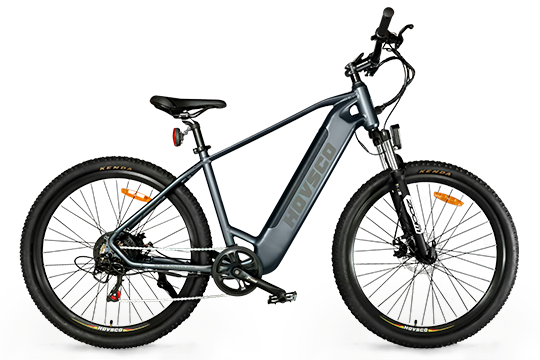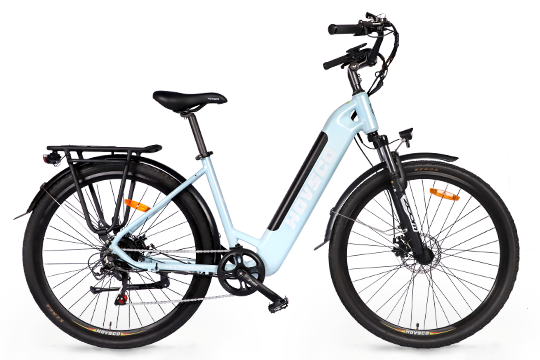The Ultimate Guide to Bike Lights: How to Choose the Right Bike Light

Whether you need to commute across town or just want a safer bike ride to school or work, having the right bike lights is an important part of riding safely at night. But with so many options are out there, how do you know what kind will fit your needs? This guide can help you choose the right light for your next bike ride.
Why do I need lights?
The law requires that cyclists ride with a white light on their front and a red reflector on their rear — but only after dark. The reason for this is fairly simple: it's hard to see things when it's dark outside. Not being able to see clearly makes riding a bike dangerous, since you might not see potholes in the road or pedestrians crossing an intersection before it's too late.
How do I know what to look for when buying bike lights?
There are plenty of things to consider when shopping for bike lights, including:
Battery life: How long will your battery last between charges? Some models have batteries that last up to 12 hours while others last only 2 hours or less. You may want a model that allows you to swap out batteries so you can keep riding even if one dies mid-ride.
Brightness: The next thing to consider when shopping for bike lights is how much brightness you need. Generally speaking, brighter is better with headlights since it lets drivers see you better in poor lighting conditions like fog or rainstorms; however, too much brightness can also make it harder for drivers to see other cars on the road and cause temporary blindness if they're looking directly into your beam.
Lumens: Brightness measured by how many lumens a bulb produces (measured in candela per square meter). Most manufacturers will list this number on their packaging. For example, if a bulb has 800 lumens and the box says so, it means that when turned on it would illuminate an area measuring 800 square meters (about 8 parking spots) brightly enough so that someone could read by it if they were standing there.
Recharge-Ability: You might want a rechargeable light if you're planning on biking long distances at night or staying out late. These lights will save you money in the long run and make it easier to plan your rides. If you don't need a rechargeable light, make sure that your battery has an indicator so you know when it needs replacing or charging.
Mounting options: If you plan on using your bike light for commuting or other trips that involve public transportation, keep in mind how easy it is to mount and dismount the unit from your handlebars. Some lights can be attached directly to the frame itself; others require separate brackets that attach to either side of the handlebars.

Weatherproofing: You'll want something that can withstand rain and wind while still providing enough illumination for safe riding conditions. A good rule of thumb is that if your bike light doesn't have an IPX rating, it won't withstand water submersion or heavy rainfall.
Power indicator: Many lights have a built-in power indicator that shows you how much battery life is left. This is especially important if you plan on riding in the dark, as it can help prevent you from running out of juice.
Beam pattern: You’ll want a light that projects a bright light over a large area so that you can be seen by other vehicles and pedestrians. If possible, look for one with multiple modes that allow you to adjust the beam pattern based on your needs and environment (like high visibility for city riding and low visibility for rural areas).
Flash patterns: Some lights have flash patterns built-in so that they can be used as an emergency flashers. This feature is especially useful if you ride at night frequently or regularly use trails where visibility may be limited by fog or darkness.
What kind of battery life can I expect from my light?
Battery life is one of the most important factors when choosing a light. Most lights are powered by rechargeable batteries and come with charging cables and adapters. The average lifespan of a rechargeable battery is anywhere from two hours to ten hours depending on how bright the light is set. If you're looking for something longer-lasting, opt for a headlight that uses alkaline batteries instead of rechargeable. But remember that alkaline batteries are less eco-friendly than rechargeable and will cost more over time.
Do I need different lights for the front and the back of my bike?
If you're riding at night, it's important to have both a headlight and taillight on your bike. These two types of lights can help keep other road users aware of your presence on the road and prevent accidents from happening in the dark. Headlights are typically used for illuminating what's ahead of you so you can see potholes or other road hazards before they're too late. Taillights let drivers know that you're there and can help them spot you more easily if they're turning into traffic from behind or passing by on either side.

Why are lumens important and how many do I need?
Lumens measure how much light is produced by a bulb or lamp, which is useful for comparing different models of headlights with each other. The higher the lumen rating, the brighter the light will appear to drivers and pedestrians alike — but not necessarily all headlights with higher ratings will appear brighter than those with lower ratings. Lumen ratings are usually listed on packaging or online product pages so you can compare one model to another before buying one.
What's the difference between headlights and taillights?
Bike lights come in two main types: headlights and taillights. Headlights are designed to light up your path in front of you so that cars can see you as well as help keep you visible to other cyclists. Taillights are designed to let drivers know where you're going so that they can change lanes if necessary (or even slow down). Both types of lights come in a variety of shapes and styles, but generally speaking there are some basic differences between them.
Final Thought
Whether you're new to biking or just want to make sure you have the right bike lights, this guide will help. Hopefully, you'll gain enough information to make an informed purchase that will serve your cycling needs well almost anywhere. Of course, cycling at night is not without its risks, but with the right bike lights, you will have a safer ride.






Leave a comment